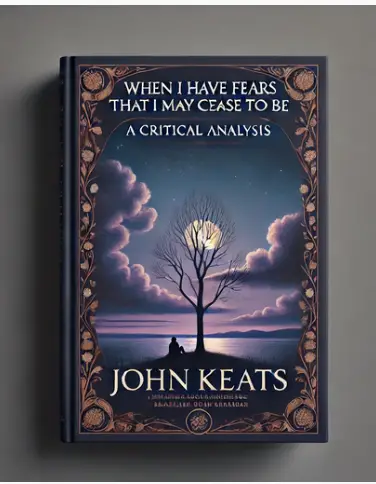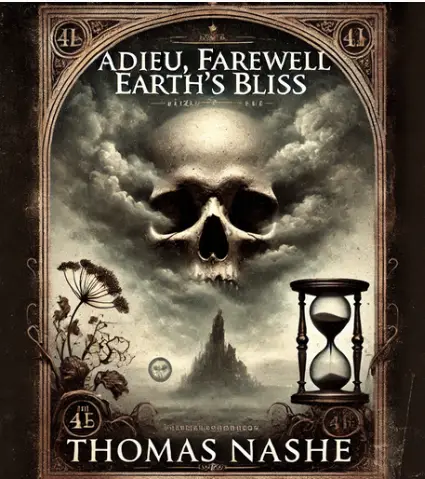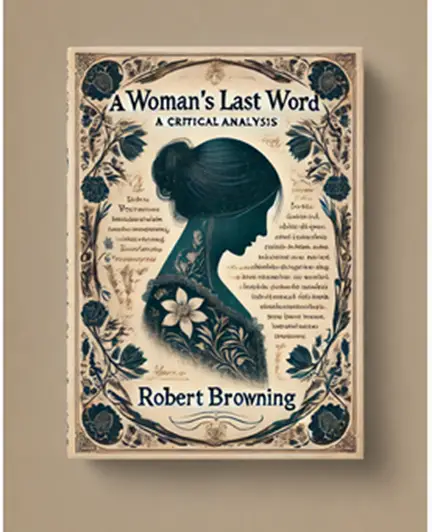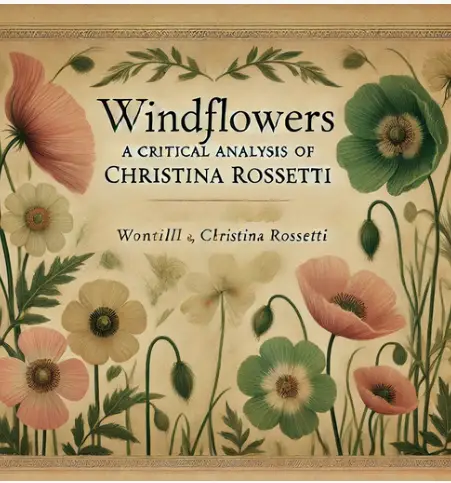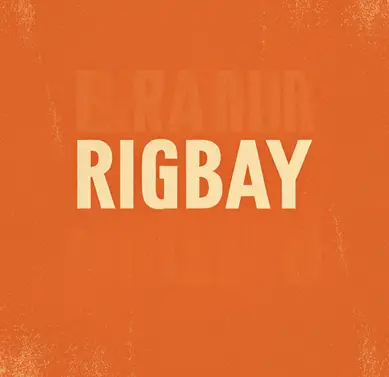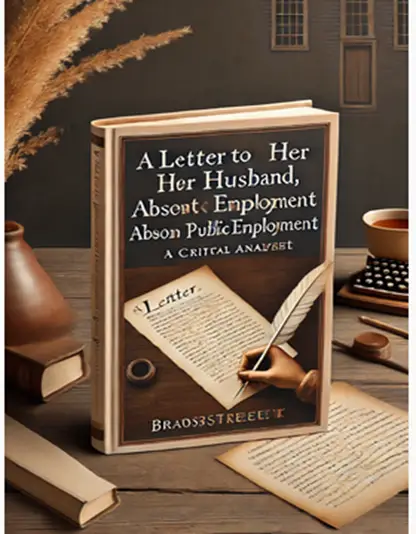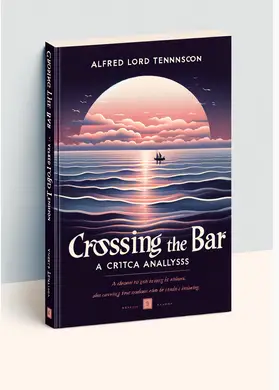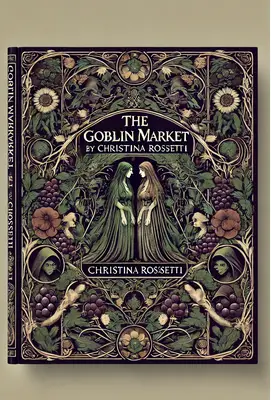
Introduction: “Goblin Market” by Christina Rossetti
“Goblin Market” by Christina Rossetti first appeared in 1862 as part of her poetry collection titled Goblin Market and Other Poems. This narrative poem delves into themes of temptation, sacrifice, and sisterly devotion, following two sisters, Laura and Lizzie, who encounter mysterious goblin merchants offering enticing but forbidden fruit. Rossetti crafts a richly symbolic allegory that has been variously interpreted as a critique of Victorian consumerism, a moral tale on purity, and an exploration of female solidarity and resilience. The poem’s popularity has endured due to its vibrant language, rhythmic cadence, and multilayered meanings, inviting readers to examine it through diverse symbolic perspectives, making it a lasting subject of literary analysis and feminist study.
Text: “Goblin Market” by Christina Rossetti
Morning and evening
Maids heard the goblins cry:
“Come buy our orchard fruits,
Come buy, come buy:
Apples and quinces,
Lemons and oranges,
Plump unpeck’d cherries,
Melons and raspberries,
Bloom-down-cheek’d peaches,
Swart-headed mulberries,
Wild free-born cranberries,
Crab-apples, dewberries,
Pine-apples, blackberries,
Apricots, strawberries;—
All ripe together
In summer weather,—
Morns that pass by,
Fair eves that fly;
Come buy, come buy:
Our grapes fresh from the vine,
Pomegranates full and fine,
Dates and sharp bullaces,
Rare pears and greengages,
Damsons and bilberries,
Taste them and try:
Currants and gooseberries,
Bright-fire-like barberries,
Figs to fill your mouth,
Citrons from the South,
Sweet to tongue and sound to eye;
Come buy, come buy.”
Evening by evening
Among the brookside rushes,
Laura bow’d her head to hear,
Lizzie veil’d her blushes:
Crouching close together
In the cooling weather,
With clasping arms and cautioning lips,
With tingling cheeks and finger tips.
“Lie close,” Laura said,
Pricking up her golden head:
“We must not look at goblin men,
We must not buy their fruits:
Who knows upon what soil they fed
Their hungry thirsty roots?”
“Come buy,” call the goblins
Hobbling down the glen.
“Oh,” cried Lizzie, “Laura, Laura,
You should not peep at goblin men.”
Lizzie cover’d up her eyes,
Cover’d close lest they should look;
Laura rear’d her glossy head,
And whisper’d like the restless brook:
“Look, Lizzie, look, Lizzie,
Down the glen tramp little men.
One hauls a basket,
One bears a plate,
One lugs a golden dish
Of many pounds weight.
How fair the vine must grow
Whose grapes are so luscious;
How warm the wind must blow
Through those fruit bushes.”
“No,” said Lizzie, “No, no, no;
Their offers should not charm us,
Their evil gifts would harm us.”
She thrust a dimpled finger
In each ear, shut eyes and ran:
Curious Laura chose to linger
Wondering at each merchant man.
One had a cat’s face,
One whisk’d a tail,
One tramp’d at a rat’s pace,
One crawl’d like a snail,
One like a wombat prowl’d obtuse and furry,
One like a ratel tumbled hurry skurry.
She heard a voice like voice of doves
Cooing all together:
They sounded kind and full of loves
In the pleasant weather.
Laura stretch’d her gleaming neck
Like a rush-imbedded swan,
Like a lily from the beck,
Like a moonlit poplar branch,
Like a vessel at the launch
When its last restraint is gone.
Backwards up the mossy glen
Turn’d and troop’d the goblin men,
With their shrill repeated cry,
“Come buy, come buy.”
When they reach’d where Laura was
They stood stock still upon the moss,
Leering at each other,
Brother with queer brother;
Signalling each other,
Brother with sly brother.
One set his basket down,
One rear’d his plate;
One began to weave a crown
Of tendrils, leaves, and rough nuts brown
(Men sell not such in any town);
One heav’d the golden weight
Of dish and fruit to offer her:
“Come buy, come buy,” was still their cry.
Laura stared but did not stir,
Long’d but had no money:
The whisk-tail’d merchant bade her taste
In tones as smooth as honey,
The cat-faced purr’d,
The rat-faced spoke a word
Of welcome, and the snail-paced even was heard;
One parrot-voiced and jolly
Cried “Pretty Goblin” still for “Pretty Polly;”—
One whistled like a bird.
But sweet-tooth Laura spoke in haste:
“Good folk, I have no coin;
To take were to purloin:
I have no copper in my purse,
I have no silver either,
And all my gold is on the furze
That shakes in windy weather
Above the rusty heather.”
“You have much gold upon your head,”
They answer’d all together:
“Buy from us with a golden curl.”
She clipp’d a precious golden lock,
She dropp’d a tear more rare than pearl,
Then suck’d their fruit globes fair or red:
Sweeter than honey from the rock,
Stronger than man-rejoicing wine,
Clearer than water flow’d that juice;
She never tasted such before,
How should it cloy with length of use?
She suck’d and suck’d and suck’d the more
Fruits which that unknown orchard bore;
She suck’d until her lips were sore;
Then flung the emptied rinds away
But gather’d up one kernel stone,
And knew not was it night or day
As she turn’d home alone.
Lizzie met her at the gate
Full of wise upbraidings:
“Dear, you should not stay so late,
Twilight is not good for maidens;
Should not loiter in the glen
In the haunts of goblin men.
Do you not remember Jeanie,
How she met them in the moonlight,
Took their gifts both choice and many,
Ate their fruits and wore their flowers
Pluck’d from bowers
Where summer ripens at all hours?
But ever in the noonlight
She pined and pined away;
Sought them by night and day,
Found them no more, but dwindled and grew grey;
Then fell with the first snow,
While to this day no grass will grow
Where she lies low:
I planted daisies there a year ago
That never blow.
You should not loiter so.”
“Nay, hush,” said Laura:
“Nay, hush, my sister:
I ate and ate my fill,
Yet my mouth waters still;
To-morrow night I will
Buy more;” and kiss’d her:
“Have done with sorrow;
I’ll bring you plums to-morrow
Fresh on their mother twigs,
Cherries worth getting;
You cannot think what figs
My teeth have met in,
What melons icy-cold
Piled on a dish of gold
Too huge for me to hold,
What peaches with a velvet nap,
Pellucid grapes without one seed:
Odorous indeed must be the mead
Whereon they grow, and pure the wave they drink
With lilies at the brink,
And sugar-sweet their sap.”
Golden head by golden head,
Like two pigeons in one nest
Folded in each other’s wings,
They lay down in their curtain’d bed:
Like two blossoms on one stem,
Like two flakes of new-fall’n snow,
Like two wands of ivory
Tipp’d with gold for awful kings.
Moon and stars gaz’d in at them,
Wind sang to them lullaby,
Lumbering owls forbore to fly,
Not a bat flapp’d to and fro
Round their rest:
Cheek to cheek and breast to breast
Lock’d together in one nest.
Early in the morning
When the first cock crow’d his warning,
Neat like bees, as sweet and busy,
Laura rose with Lizzie:
Fetch’d in honey, milk’d the cows,
Air’d and set to rights the house,
Kneaded cakes of whitest wheat,
Cakes for dainty mouths to eat,
Next churn’d butter, whipp’d up cream,
Fed their poultry, sat and sew’d;
Talk’d as modest maidens should:
Lizzie with an open heart,
Laura in an absent dream,
One content, one sick in part;
One warbling for the mere bright day’s delight,
One longing for the night.
At length slow evening came:
They went with pitchers to the reedy brook;
Lizzie most placid in her look,
Laura most like a leaping flame.
They drew the gurgling water from its deep;
Lizzie pluck’d purple and rich golden flags,
Then turning homeward said: “The sunset flushes
Those furthest loftiest crags;
Come, Laura, not another maiden lags.
No wilful squirrel wags,
The beasts and birds are fast asleep.”
But Laura loiter’d still among the rushes
And said the bank was steep.
And said the hour was early still
The dew not fall’n, the wind not chill;
Listening ever, but not catching
The customary cry,
“Come buy, come buy,”
With its iterated jingle
Of sugar-baited words:
Not for all her watching
Once discerning even one goblin
Racing, whisking, tumbling, hobbling;
Let alone the herds
That used to tramp along the glen,
In groups or single,
Of brisk fruit-merchant men.
Till Lizzie urged, “O Laura, come;
I hear the fruit-call but I dare not look:
You should not loiter longer at this brook:
Come with me home.
The stars rise, the moon bends her arc,
Each glowworm winks her spark,
Let us get home before the night grows dark:
For clouds may gather
Though this is summer weather,
Put out the lights and drench us through;
Then if we lost our way what should we do?”
Laura turn’d cold as stone
To find her sister heard that cry alone,
That goblin cry,
“Come buy our fruits, come buy.”
Must she then buy no more such dainty fruit?
Must she no more such succous pasture find,
Gone deaf and blind?
Her tree of life droop’d from the root:
She said not one word in her heart’s sore ache;
But peering thro’ the dimness, nought discerning,
Trudg’d home, her pitcher dripping all the way;
So crept to bed, and lay
Silent till Lizzie slept;
Then sat up in a passionate yearning,
And gnash’d her teeth for baulk’d desire, and wept
As if her heart would break.
Day after day, night after night,
Laura kept watch in vain
In sullen silence of exceeding pain.
She never caught again the goblin cry:
“Come buy, come buy;”—
She never spied the goblin men
Hawking their fruits along the glen:
But when the noon wax’d bright
Her hair grew thin and grey;
She dwindled, as the fair full moon doth turn
To swift decay and burn
Her fire away.
One day remembering her kernel-stone
She set it by a wall that faced the south;
Dew’d it with tears, hoped for a root,
Watch’d for a waxing shoot,
But there came none;
It never saw the sun,
It never felt the trickling moisture run:
While with sunk eyes and faded mouth
She dream’d of melons, as a traveller sees
False waves in desert drouth
With shade of leaf-crown’d trees,
And burns the thirstier in the sandful breeze.
She no more swept the house,
Tended the fowls or cows,
Fetch’d honey, kneaded cakes of wheat,
Brought water from the brook:
But sat down listless in the chimney-nook
And would not eat.
Tender Lizzie could not bear
To watch her sister’s cankerous care
Yet not to share.
She night and morning
Caught the goblins’ cry:
“Come buy our orchard fruits,
Come buy, come buy;”—
Beside the brook, along the glen,
She heard the tramp of goblin men,
The yoke and stir
Poor Laura could not hear;
Long’d to buy fruit to comfort her,
But fear’d to pay too dear.
She thought of Jeanie in her grave,
Who should have been a bride;
But who for joys brides hope to have
Fell sick and died
In her gay prime,
In earliest winter time
With the first glazing rime,
With the first snow-fall of crisp winter time.
Till Laura dwindling
Seem’d knocking at Death’s door:
Then Lizzie weigh’d no more
Better and worse;
But put a silver penny in her purse,
Kiss’d Laura, cross’d the heath with clumps of furze
At twilight, halted by the brook:
And for the first time in her life
Began to listen and look.
Laugh’d every goblin
When they spied her peeping:
Came towards her hobbling,
Flying, running, leaping,
Puffing and blowing,
Chuckling, clapping, crowing,
Clucking and gobbling,
Mopping and mowing,
Full of airs and graces,
Pulling wry faces,
Demure grimaces,
Cat-like and rat-like,
Ratel- and wombat-like,
Snail-paced in a hurry,
Parrot-voiced and whistler,
Helter skelter, hurry skurry,
Chattering like magpies,
Fluttering like pigeons,
Gliding like fishes,—
Hugg’d her and kiss’d her:
Squeez’d and caress’d her:
Stretch’d up their dishes,
Panniers, and plates:
“Look at our apples
Russet and dun,
Bob at our cherries,
Bite at our peaches,
Citrons and dates,
Grapes for the asking,
Pears red with basking
Out in the sun,
Plums on their twigs;
Pluck them and suck them,
Pomegranates, figs.”—
“Good folk,” said Lizzie,
Mindful of Jeanie:
“Give me much and many: —
Held out her apron,
Toss’d them her penny.
“Nay, take a seat with us,
Honour and eat with us,”
They answer’d grinning:
“Our feast is but beginning.
Night yet is early,
Warm and dew-pearly,
Wakeful and starry:
Such fruits as these
No man can carry:
Half their bloom would fly,
Half their dew would dry,
Half their flavour would pass by.
Sit down and feast with us,
Be welcome guest with us,
Cheer you and rest with us.”—
“Thank you,” said Lizzie: “But one waits
At home alone for me:
So without further parleying,
If you will not sell me any
Of your fruits though much and many,
Give me back my silver penny
I toss’d you for a fee.”—
They began to scratch their pates,
No longer wagging, purring,
But visibly demurring,
Grunting and snarling.
One call’d her proud,
Cross-grain’d, uncivil;
Their tones wax’d loud,
Their looks were evil.
Lashing their tails
They trod and hustled her,
Elbow’d and jostled her,
Claw’d with their nails,
Barking, mewing, hissing, mocking,
Tore her gown and soil’d her stocking,
Twitch’d her hair out by the roots,
Stamp’d upon her tender feet,
Held her hands and squeez’d their fruits
Against her mouth to make her eat.
White and golden Lizzie stood,
Like a lily in a flood,—
Like a rock of blue-vein’d stone
Lash’d by tides obstreperously,—
Like a beacon left alone
In a hoary roaring sea,
Sending up a golden fire,—
Like a fruit-crown’d orange-tree
White with blossoms honey-sweet
Sore beset by wasp and bee,—
Like a royal virgin town
Topp’d with gilded dome and spire
Close beleaguer’d by a fleet
Mad to tug her standard down.
One may lead a horse to water,
Twenty cannot make him drink.
Though the goblins cuff’d and caught her,
Coax’d and fought her,
Bullied and besought her,
Scratch’d her, pinch’d her black as ink,
Kick’d and knock’d her,
Maul’d and mock’d her,
Lizzie utter’d not a word;
Would not open lip from lip
Lest they should cram a mouthful in:
But laugh’d in heart to feel the drip
Of juice that syrupp’d all her face,
And lodg’d in dimples of her chin,
And streak’d her neck which quaked like curd.
At last the evil people,
Worn out by her resistance,
Flung back her penny, kick’d their fruit
Along whichever road they took,
Not leaving root or stone or shoot;
Some writh’d into the ground,
Some div’d into the brook
With ring and ripple,
Some scudded on the gale without a sound,
Some vanish’d in the distance.
In a smart, ache, tingle,
Lizzie went her way;
Knew not was it night or day;
Sprang up the bank, tore thro’ the furze,
Threaded copse and dingle,
And heard her penny jingle
Bouncing in her purse,—
Its bounce was music to her ear.
She ran and ran
As if she fear’d some goblin man
Dogg’d her with gibe or curse
Or something worse:
But not one goblin scurried after,
Nor was she prick’d by fear;
The kind heart made her windy-paced
That urged her home quite out of breath with haste
And inward laughter.
She cried, “Laura,” up the garden,
“Did you miss me?
Come and kiss me.
Never mind my bruises,
Hug me, kiss me, suck my juices
Squeez’d from goblin fruits for you,
Goblin pulp and goblin dew.
Eat me, drink me, love me;
Laura, make much of me;
For your sake I have braved the glen
And had to do with goblin merchant men.”
Laura started from her chair,
Flung her arms up in the air,
Clutch’d her hair:
“Lizzie, Lizzie, have you tasted
For my sake the fruit forbidden?
Must your light like mine be hidden,
Your young life like mine be wasted,
Undone in mine undoing,
And ruin’d in my ruin,
Thirsty, canker’d, goblin-ridden?”—
She clung about her sister,
Kiss’d and kiss’d and kiss’d her:
Tears once again
Refresh’d her shrunken eyes,
Dropping like rain
After long sultry drouth;
Shaking with aguish fear, and pain,
She kiss’d and kiss’d her with a hungry mouth.
Her lips began to scorch,
That juice was wormwood to her tongue,
She loath’d the feast:
Writhing as one possess’d she leap’d and sung,
Rent all her robe, and wrung
Her hands in lamentable haste,
And beat her breast.
Her locks stream’d like the torch
Borne by a racer at full speed,
Or like the mane of horses in their flight,
Or like an eagle when she stems the light
Straight toward the sun,
Or like a caged thing freed,
Or like a flying flag when armies run.
Swift fire spread through her veins, knock’d at her heart,
Met the fire smouldering there
And overbore its lesser flame;
She gorged on bitterness without a name:
Ah! fool, to choose such part
Of soul-consuming care!
Sense fail’d in the mortal strife:
Like the watch-tower of a town
Which an earthquake shatters down,
Like a lightning-stricken mast,
Like a wind-uprooted tree
Spun about,
Like a foam-topp’d waterspout
Cast down headlong in the sea,
She fell at last;
Pleasure past and anguish past,
Is it death or is it life?
Life out of death.
That night long Lizzie watch’d by her,
Counted her pulse’s flagging stir,
Felt for her breath,
Held water to her lips, and cool’d her face
With tears and fanning leaves:
But when the first birds chirp’d about their eaves,
And early reapers plodded to the place
Of golden sheaves,
And dew-wet grass
Bow’d in the morning winds so brisk to pass,
And new buds with new day
Open’d of cup-like lilies on the stream,
Laura awoke as from a dream,
Laugh’d in the innocent old way,
Hugg’d Lizzie but not twice or thrice;
Her gleaming locks show’d not one thread of grey,
Her breath was sweet as May
And light danced in her eyes.
Days, weeks, months, years
Afterwards, when both were wives
With children of their own;
Their mother-hearts beset with fears,
Their lives bound up in tender lives;
Laura would call the little ones
And tell them of her early prime,
Those pleasant days long gone
Of not-returning time:
Would talk about the haunted glen,
The wicked, quaint fruit-merchant men,
Their fruits like honey to the throat
But poison in the blood;
(Men sell not such in any town):
Would tell them how her sister stood
In deadly peril to do her good,
And win the fiery antidote:
Then joining hands to little hands
Would bid them cling together,
“For there is no friend like a sister
In calm or stormy weather;
To cheer one on the tedious way,
To fetch one if one goes astray,
To lift one if one totters down,
To strengthen whilst one stands.”
Annotations: “Goblin Market” by Christina Rossetti
| Stanza | Annotation |
| “Morning and evening… Come buy, come buy.” | The poem opens with goblins enticing young women with enchanting fruits, establishing a mysterious and foreboding atmosphere. |
| “Evening by evening… finger tips.” | Laura and Lizzie’s different responses to the goblins highlight curiosity versus caution, setting up a theme of temptation and moral integrity. |
| “Laura rear’d her glossy head… bushes.” | Laura’s fascination with the goblins’ offerings symbolizes a desire to explore the forbidden, while Lizzie warns against it, underscoring the pull of temptation. |
| “We must not look at goblin men… linger.” | Lizzie cautions Laura about the dangers of the goblins, symbolizing a moral awareness and self-restraint, but Laura’s curiosity wins over. |
| “One had a cat’s face… hurry skurry.” | The goblins are described with grotesque, animalistic features, underscoring their otherworldly, possibly sinister nature and adding to the poem’s fantastical elements. |
| “Laura stretch’d her gleaming neck… gone.” | Laura’s surrender to temptation is described through nature-based imagery, symbolizing her innocence at risk. |
| “Laura stared but did not stir… honey, The cat-faced purr’d” | Laura sacrifices a “golden curl,” symbolizing how indulgence can demand a part of oneself, hinting at the cost of yielding to temptation. |
| “Lizzie met her at the gate… you should not loiter so.” | Lizzie reminds Laura of Jeanie’s cautionary tale, adding to the poem’s moral dimension about purity and the risks of temptation. |
| “I ate and ate my fill… sugar-sweet their sap.” | Laura’s insatiable desire for more fruit symbolizes addiction and the consuming nature of unchecked desires. |
| “Early in the morning… longing for the night.” | The day-to-day routines contrast the supernatural events of the previous night, emphasizing the bond between the sisters and suggesting a moral simplicity. |
| “But Laura loiter’d still… fruit-merchant men.” | Laura’s growing desperation, as she searches for the goblins, symbolizes her spiritual decline as her craving intensifies. |
| “Then if we lost our way… all the way;” | Lizzie’s concern contrasts with Laura’s growing blindness and deafness to reason, depicting the loss of innocence and the descent into despair. |
| “One day remembering her kernel-stone… sandful breeze.” | Laura’s attempt to grow the goblin fruit from a seed shows her yearning for more and her failure to escape the consequences of indulgence. |
Literary And Poetic Devices: “Goblin Market” by Christina Rossetti
| Device | Examples | Explanation |
| Alliteration | “Maids heard the goblins cry”, “Crouching close together” | The repetition of consonant sounds, particularly at the beginning of words, creates rhythm and musicality, enhancing the poem’s lyrical quality. |
| Allusion | “Her tree of life droop’d from the root” | References to biblical or mythological ideas, such as the “tree of life,” evoke themes of forbidden knowledge and temptation akin to the Garden of Eden. |
| Anaphora | “She suck’d and suck’d and suck’d” | Repetition of the phrase emphasizes Laura’s obsessive indulgence in the goblin fruits, highlighting her uncontrollable desire. |
| Assonance | “Curious Laura chose to linger”, “Clasping arms” | Repetition of vowel sounds adds a musical quality to the verse, often creating mood and enhancing the flow. |
| Consonance | “With clasping arms and cautioning lips” | The repetition of similar consonant sounds within words provides rhythm and texture, enhancing the intimacy and tension in the scene. |
| Enjambment | “She suck’d until her lips were sore; Then flung the emptied rinds away” | A sentence continues without a pause beyond the end of a line, which accelerates the pace and mirrors the urgency of Laura’s actions. |
| Imagery | “Bloom-down-cheek’d peaches,”, “Bright-fire-like barberries” | Vivid descriptions evoke the senses, creating mental images that make the goblin fruits and their allure tangible and tempting to the reader. |
| Internal Rhyme | “Morns that pass by, Fair eves that fly;” | Rhyming within a single line adds musicality, reinforcing the seductive and rhythmic appeal of the goblins’ chant. |
| Irony | “The goblins who lure Laura with ‘love’ but intend harm” | Despite the goblins’ pleasant appearance and sweet words, their intentions are malicious, showcasing the irony of their ‘kindness.’ |
| Metaphor | “Laura stretch’d her gleaming neck like a rush-imbedded swan” | Laura is compared to a swan to symbolize her beauty and innocence, highlighting the contrast between her purity and the goblins’ corruptive influence. |
| Mood | “Maids heard the goblins cry”, “In the cooling weather” | The eerie and mysterious atmosphere, or mood, is created by using specific descriptions and words that evoke suspense and unease. |
| Onomatopoeia | “Cooing,”, “Mewing,”, “Hissing” | Words that mimic sounds reinforce the goblins’ animalistic traits, emphasizing their otherworldly nature. |
| Personification | “And dew-wet grass Bow’d in the morning winds” | Inanimate elements, like grass, are given human characteristics to make nature seem alive and dynamic, deepening the poem’s immersion in natural beauty. |
| Repetition | “Come buy, come buy,”, “Suck’d and suck’d and suck’d” | Repeated phrases emphasize the goblins’ persistent temptation and Laura’s insatiable craving, adding to the poem’s rhythmic allure. |
| Rhyme Scheme | “Fruit to fill the mouth, Citrons from the south” | The consistent rhyming pattern adds musicality and structure, underscoring the song-like quality of the goblin chant and making it memorable. |
| Simile | “Like a lily from the beck,”, “Like a rush-imbedded swan” | Similes compare Laura to pure and graceful objects, highlighting her innocence and the contrasting corruption of the goblins. |
| Symbolism | “Golden curl,”, “Goblin fruit” | The golden curl symbolizes Laura’s innocence and purity, while the goblin fruit represents forbidden temptation, lending deeper meaning to these objects. |
| Synesthesia | “Sweet to tongue and sound to eye” | Mixing sensory experiences, such as taste and sight, emphasizes the overwhelming allure of the goblin fruits and their almost magical appeal. |
| Tone | “Laura’s desperate craving” vs. “Lizzie’s cautiousness” | The tone shifts from caution to despair as Laura succumbs, creating a dynamic contrast that reflects the psychological journey of temptation and redemption. |
| Verse Structure | Irregular rhyme scheme and stanza lengths | The varied structure adds a sense of unpredictability, mirroring the goblins’ chaotic and alluring presence, and distinguishing this poem’s style. |
Themes: “Goblin Market” by Christina Rossetti
- Temptation and Desire: The theme of temptation is evident throughout Goblin Market, especially as the goblins lure Laura with their “orchard fruits,” using enticing calls to draw her attention: “Come buy our orchard fruits… Apples and quinces, / Lemons and oranges.” These fruits symbolize forbidden desires, and Laura’s inability to resist highlights the allure of indulgence. Her consumption of the fruit leads her into an obsessive craving, represented in the line, “I ate and ate my fill, / Yet my mouth waters still.” This overwhelming desire serves as a warning about the dangers of surrendering to one’s temptations.
- Sisterhood and Sacrifice: The bond between Laura and Lizzie underscores the poem’s focus on sisterhood and the strength found in familial love. Lizzie’s selfless act of facing the goblins to save Laura exemplifies the power of sacrificial love: “For your sake I have braved the glen / And had to do with goblin merchant men.” Lizzie endures abuse and humiliation to obtain the antidote for her sister, and her courage ultimately revives Laura, demonstrating that love and loyalty can overcome even the deepest despair and addiction.
- The Danger of Moral Transgression: Rossetti warns of the consequences of yielding to temptation through Laura’s plight after eating the goblin fruits. Once she partakes in the forbidden offering, she becomes sickly and begins to waste away, paralleling moral and physical degradation. Her hair “grew thin and grey,” and she “dwindled, as the fair full moon doth turn / To swift decay and burn / Her fire away.” The poem suggests that straying from moral integrity, as Laura does, leads to a form of spiritual death that only sacrifice and true repentance can heal.
- Redemption and Renewal: Despite Laura’s fall, her redemption is made possible through Lizzie’s brave intervention. When Lizzie confronts the goblins, she refuses to succumb to their pressure, becoming an instrument of salvation for her sister. After Lizzie brings Laura the antidote, Laura is rejuvenated, “Her breath was sweet as May / And light danced in her eyes.” This rebirth emphasizes the possibility of redemption, suggesting that even after the deepest moral failings, one can return to a state of purity and innocence through love, sacrifice, and repentance.
Literary Theories and “Goblin Market” by Christina Rossetti
| Literary Theory | Application to Goblin Market | References from the Poem |
| Feminist Theory | Goblin Market can be analyzed as a critique of Victorian expectations of women’s purity and sexuality. The poem explores female autonomy, especially through Lizzie’s resilience against the goblins, and the solidarity shared between the sisters. Feminist readings often interpret the goblins’ attempts to lure women as symbolic of patriarchal control, while Lizzie’s refusal reflects a woman’s agency in resisting societal pressures. | “For there is no friend like a sister… To strengthen whilst one stands.” Here, sisterhood is depicted as a source of strength and support against external temptations. Lizzie’s bravery in the face of goblins further highlights the power of female unity. |
| Marxist Theory | Through a Marxist lens, the poem can be interpreted as a critique of capitalist consumerism. The goblins’ fruits represent seductive commodities, and the goblins as merchants symbolize manipulative capitalists. Laura’s initial consumption followed by her physical and moral decline underscores the dangers of unchecked material desire, while Lizzie’s resistance to buying their fruits suggests a rejection of exploitative consumer practices. | “Come buy, come buy,” as the goblins repeatedly urge the sisters to purchase, reflects the incessant call of consumerism. Laura’s deteriorating state after indulging in the fruits represents the destructive effects of material excess. |
| Psychoanalytic Theory | From a psychoanalytic perspective, the goblins represent the id, tempting Laura’s unconscious desires, while Lizzie embodies the superego, attempting to enforce restraint. Laura’s succumbing to the fruit is symbolic of repressed desires surfacing, which leads to her “addiction” and moral decay. Lizzie’s intervention symbolizes the ego’s balancing force, allowing Laura to find resolution and healing. | “I ate and ate my fill, / Yet my mouth waters still,” reflects Laura’s unrestrained indulgence in forbidden desires, symbolizing the overpowering force of the id. Lizzie’s resistance to the goblins contrasts as a display of moral self-control and discipline. |
Critical Questions about “Goblin Market” by Christina Rossetti
- How does Rossetti portray the theme of temptation, and what might the goblin fruit symbolize in a moral or spiritual sense?
- In “Goblin Market”, Rossetti presents temptation as both alluring and dangerous, with the goblin fruit representing an enticing yet forbidden indulgence. The fruits are described as “Apples and quinces, / Lemons and oranges, / Plump unpeck’d cherries,” evoking a sense of abundance and sensory appeal. However, Laura’s physical and spiritual decline after consuming the fruit suggests that the fruits symbolize more than a simple pleasure; they represent a dangerous surrender to desire. Laura’s transformation, as she grows “thin and grey” and “dwindles,” reflects the destructive consequences of succumbing to temptation, hinting that the goblin fruit serves as a moral warning against giving in to unchecked desires.
- In what ways does the poem explore the bond between women, particularly through the relationship between Laura and Lizzie?
- The bond between Laura and Lizzie is central to “Goblin Market”, symbolizing the strength of sisterhood and solidarity in overcoming challenges. Lizzie’s devotion to Laura, even as she sacrifices her own safety to confront the goblins, demonstrates the power of selfless love: “For your sake I have braved the glen / And had to do with goblin merchant men.” This sacrificial act emphasizes the redemptive power of love, especially between women, as Lizzie’s courageous act ultimately saves Laura. By highlighting their sisterly bond, Rossetti underscores a feminist theme of female unity and support, suggesting that women’s resilience is stronger when they stand together.
- How does “Goblin Market” reflect Victorian societal views on women, morality, and purity?
- “Goblin Market” reflects Victorian society’s emphasis on female purity and the consequences of transgressing moral boundaries. The character of Laura, who is initially curious about the goblins’ fruits despite warnings, can be seen as symbolizing a woman who defies societal expectations. Her consumption of the fruit results in moral and physical decay, illustrated as her “hair grew thin and grey.” Victorian readers might interpret Laura’s experience as a cautionary tale reinforcing the period’s strict moral code, suggesting that deviation from purity leads to suffering. Rossetti’s portrayal reflects the cultural expectations of women to adhere to moral virtue, while Lizzie’s purity and sacrifice serve as the model for societal ideals.
- What is the significance of redemption in “Goblin Market”, and how does Rossetti suggest it is achieved?
- Redemption is a significant theme in “Goblin Market”, embodied in Lizzie’s self-sacrifice and Laura’s ultimate restoration. After Lizzie faces the goblins and brings Laura the antidote in the form of the goblins’ juices, Laura experiences a kind of resurrection: “Her breath was sweet as May / And light danced in her eyes.” This renewal symbolizes that redemption is achieved through love, resilience, and selflessness, particularly in the context of sisterly devotion. Rossetti implies that, despite moral failings or moments of weakness, individuals can be redeemed through genuine acts of love and support from others. Lizzie’s role in Laura’s redemption reinforces the poem’s suggestion that true salvation lies in compassion and solidarity, rather than judgment or punishment.
Literary Works Similar to “Goblin Market” by Christina Rossetti
- “The Rime of the A“The Rime of The Ancient Mariner Part II” by Samuel T. Coleridgencient Mariner” by Samuel Taylor Coleridge
Shares themes of temptation and redemption, with the mariner’s moral journey mirroring Laura’s in “Goblin Market”. - “La Belle Dame sans Merci” by John Keats
Both poems explore the allure and danger of supernatural temptation, as well as the consequences of succumbing to enchanting but destructive figures. - “The Lady of Shalott” by Alfred, Lord Tennyson
Examines themes of isolation, forbidden desire, and the tragic outcome of breaking societal or magical restrictions, paralleling Laura’s experience. - “The Eve of St. Agnes” by John Keats
Similar in its dreamlike, sensory imagery and focus on the conflict between desire and moral restraint, much like Rossetti’s portrayal of temptation. - “Porphyria’s Lover” by Robert Browning
Explores possessive love and the dark consequences of yielding to passion, reflecting the intensity of desire and the boundary between love and obsession.
Representative Quotations of “Goblin Market” by Christina Rossetti
| Quotation | Context | Theoretical Perspective |
| “Come buy, come buy: / Our grapes fresh from the vine” | The goblins entice the sisters with tempting fruit, initiating the theme of temptation. | Marxist Theory: Reflects consumerism, where materialism corrupts. |
| “We must not look at goblin men, / We must not buy their fruits” | Lizzie warns Laura about the dangers of engaging with the goblins, embodying caution and morality. | Moral Criticism: Represents Victorian moral values, urging self-restraint. |
| “Her hair grew thin and grey; / She dwindled, as the fair full moon doth turn” | Laura suffers physical and emotional decline after consuming the forbidden fruit. | Psychoanalytic Theory: Reflects punishment for yielding to suppressed desires. |
| “For your sake I have braved the glen / And had to do with goblin merchant men” | Lizzie risks her safety to help Laura, symbolizing selfless sisterhood and sacrifice. | Feminist Theory: Illustrates female solidarity and strength in adversity. |
| “She suck’d and suck’d and suck’d the more” | Laura’s insatiable consumption of the goblin fruit highlights her inability to resist temptation. | Psychological Criticism: Reflects addictive behavior and loss of control. |
| “Their offers should not charm us, / Their evil gifts would harm us” | Lizzie voices the dangers of the goblins’ gifts, foreshadowing the harmful consequences for Laura. | Moral Criticism: Symbolizes the conflict between virtue and vice. |
| “Golden head by golden head, / Like two pigeons in one nest” | Lizzie and Laura lie together, highlighting the closeness and unity of their bond. | Feminist Theory: Demonstrates the power of female companionship and sisterhood. |
| “Her breath was sweet as May / And light danced in her eyes” | Laura is restored after Lizzie’s sacrifice, symbolizing renewal and redemption. | Religious Allegory: Suggests a Christian redemption narrative, with Lizzie as a Christ-like figure. |
| “Do you not remember Jeanie, / How she met them in the moonlight” | Lizzie recalls Jeanie’s tragic fate, a cautionary tale to prevent Laura’s suffering. | Feminist Theory: Reflects the consequences of societal transgression for women. |
| “For there is no friend like a sister / In calm or stormy weather” | The poem concludes with a message on the enduring strength of sisterly love and loyalty. | Humanist Perspective: Emphasizes human connections and resilience through familial love. |
Suggested Readings: “Goblin Market” by Christina Rossetti
- Packer, Lona Mosk. “Symbol and Reality in Christina Rossetti’s Goblin Market.” PMLA, vol. 73, no. 4, 1958, pp. 375–85. JSTOR, https://doi.org/10.2307/460256. Accessed 29 Oct. 2024.
- Harrison, Antony H. “Christina Rossetti: Illness and Ideology.” Victorian Poetry, vol. 45, no. 4, 2007, pp. 415–28. JSTOR, http://www.jstor.org/stable/40347411. Accessed 29 Oct. 2024.
- Mendoza, Victor Roman. “‘Come Buy’: The Crossing of Sexual and Consumer Desire in Christina Rossetti’s ‘Goblin Market.'” ELH, vol. 73, no. 4, 2006, pp. 913–47. JSTOR, http://www.jstor.org/stable/30030043. Accessed 29 Oct. 2024.
- Mermin, Dorothy. “Heroic Sisterhood in ‘Goblin Market.'” Victorian Poetry, vol. 21, no. 2, 1983, pp. 107–18. JSTOR, http://www.jstor.org/stable/40002024. Accessed 29 Oct. 2024.
- Helsinger, Elizabeth K. “Consumer Power and the Utopia of Desire: Christina Rossetti’s ‘Goblin Market.'” ELH, vol. 58, no. 4, 1991, pp. 903–33. JSTOR, https://doi.org/10.2307/2873286. Accessed 29 Oct. 2024.
- Grass, Sean C. “Nature’s Perilous Variety in Rossetti’s ‘Goblin Market.'” Nineteenth-Century Literature, vol. 51, no. 3, 1996, pp. 356–76. JSTOR, https://doi.org/10.2307/2934015. Accessed 29 Oct. 2024.
- Carpenter, Mary Wilson. “‘Eat Me, Drink Me, Love Me’: The Consumable Female Body in Christina Rossetti’s ‘Goblin Market.'” Victorian Poetry, vol. 29, no. 4, 1991, pp. 415–34. JSTOR, http://www.jstor.org/stable/40003006. Accessed 29 Oct. 2024.
